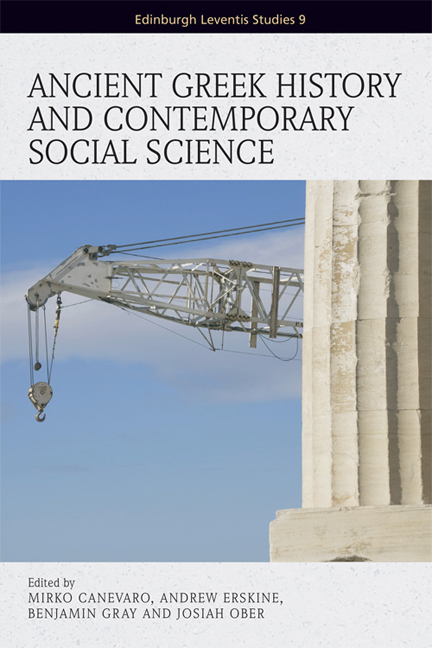16 - The Koinon Dogma, the Mercenary Threat and the Consolidation of the Democratic Revolutions in Mid- Fifth-Century Sicily
Published online by Cambridge University Press: 06 May 2021
Summary
INTRODUCTION
In a period of ten years, a series of popular uprisings toppled each of Sicily's powerful fifth-century tyrannies. The revolution in Akragas came first; its tyrant, Thrasydaios, was overthrown shorty after suffering a military defeat in 472/1 (Diod. Sic. 11.53.5). It appears (Diod. Sic. 11.68.1) that several other cities – Gela, Selinous and Himera among them – subsequently overthrew their tyrants and gained their own independence. The second wave came six years later (466), when the people of Syracuse, assisted by both the aforementioned Sicilian Greeks and a number of native Sikels, overthrew the tyrant Thrasyboulos (Diod. Sic. 11.67.6–68.5). According to Diodorus (11.68.5), the Syracusans then ‘liberated the other cities, which were either in the hands of tyrants or had garrisons, and reestablished democracies in them’. And finally, the sons of Anaxilas were overthrown c. 461, resulting in the liberation of both Messana/Zankle and Rhegium (Diod. Sic. 11.76.5).
The democracies established in the wake of these revolutions appear to have survived for several decades. Diodorus (11.68.6) provides explicit (if somewhat debatable) testimony for the democracy at Syracuse: it maintained control of the city, he writes, until the tyranny of Dionysios (i.e. until 406). The evidence for the survival of the democracies in the other Greek cities is not very good. But, in a recent study, Eric Robinson has argued that those regimes were similarly successful. Under the category ‘democracy attested with a high degree of certainty’, Robinson lists Gela (466–405), Himera (466–409), Leontinoi (463–424), Selinous (466–410) and Akragas (472–406). And under the category ‘democracy attested with a lesser degree of certainty’, he lists Kamarina (461–400), Messana/Zankle (466–401) and (Italian) Rhegium (466–401).
It is striking that so many democracies persisted for so long after these revolutions. Revolutions – acts of destruction – are difficult to accomplish. But the subsequent transition to the constructive act of governing is fraught with complex challenges – ancient and modern history tells us that: for example, modern-day Egypt after the socalled Arab Spring, ancient Corinth in 392–386 and the very shortlived democracies in the cities of Achaia in 366–365. It would thus be noteworthy if only one of the new Sicilian democracies survived for any significant amount of time. But, as noted above, several did. How can we account for that fact? Why did so many Sicilian poleis complete the transition to democracy after their individual revolutions?
- Type
- Chapter
- Information
- Ancient Greek History and Contemporary Social Science , pp. 455 - 482Publisher: Edinburgh University PressPrint publication year: 2018



